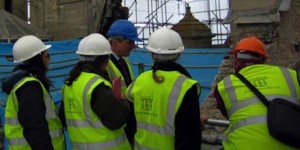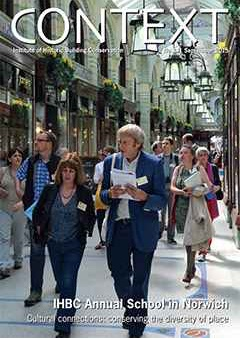The Mayor of London Boris Johnson has called on developers, planners, local authorities and others responsible for the planning and design of the capital to put culture and creativity at the forefront of their thinking about developments in the city, as he launched ‘An A-Z of planning and culture’, which outlines the practical steps that can be taken to integrate and protect culture and even support new cultural activity in developments.
To coincide with the publication of the guide, around 250 developers, planners and cultural leaders went to City Hall on 26 October for a high level summit looking at how to ensure culture can be protected and placed at the heart of London’s future development.
London.gov writes:
The Mayor’s comments come amidst increasing fears that artists and creative talent are being squeezed out, because they find studios and workspaces unaffordable and London increasingly expensive to live in. The Mayor has now published ‘An A-Z of planning and culture’, which, for the first time, outlines the practical steps that can be taken to integrate and protect culture and even support new cultural activity in developments.
The Mayor of London Boris Johnson said: ‘As London continues to grow and prosper, there is a critical need to build more homes for Londoners, but this should not be at the expense of our culture and distinctiveness, which are hugely important for our economy. There are good examples of developers and planners incorporating culture into their regeneration schemes, including Olympicopolis, London City Island, the City and Nine Elms. We want more of them to be talking to, even working with cultural bosses, artists and other creatives at the start of projects and recognise the value of culture, not just to our city’s quality of life, but to the success of their developments.’
Four out of five people say that culture is main reason that they come to London, which is known around the world for its vibrant creativity and character, from music to the visual arts and its theatre to its nightlife. The creative industries are estimated to be worth £35 billion annually, whilst cultural tourists spent £7.5 billion in 2013, underlining the importance of these sectors to the economy.
Developers now realise the huge economic value to new developments that an anchor or cluster of cultural activity and facilities can bring to ever changing and growing areas of the city, making London’s new places vibrant dynamic neighbourhoods, such as an expanded and relocated college and new cultural businesses at the heart of the Elephant & Castle shopping centre regeneration.
Yet there are mounting concerns about London losing artist studios, music venues, pubs, theatres and other cultural spaces. The capital is set to lose 3,500 artist studios in the next five years*, a third of the capital’s creative workspace, whilst a third of grassroots live music venues have disappeared since 2007.
The urgent need for housing and the impact of commercial and business redevelopment, combined with other factors such as local planning issues, licensing rules and rising business rates are contributing to the loss of creative workspaces and cultural venues that are a key part of London’s attractiveness as a place to live and work in and to visit.
The Mayor already backs a range of initiatives to support the capital’s cultural and creative sectors, such as the Agent of Change principle, a rescue plan for music venues and using the London Plan to ensure boroughs take a pro-culture approach to planning.
He has also actively encouraged organisations to bid for regeneration funding, such as through the London Enterprise Panel’s Growing Places Fund and London Regeneration Fund. Support includes the SPACE studios project on Mare Street in Hackney, which received funding from the Mayor’s Spacehive campaign; funding from the Mayor’s High Street Fund for Create and Bow Arts, which are reopening The Old Manor Park Library in Newham as a public workshop space for artists, creative businesses and the community; the Green Rooms Arts Hotel project in Haringey, which will provide affordable accommodation for visiting artists, has also received funding from the High Street Fund.
The Mayor’s new guide, ‘An A-Z of Planning and Culture’, is aimed at the people and organisations shaping London’s future, including councils, developers, planners, community groups and cultural bodies. It provides examples of good practice, where culture is being included in developments and gives information about what developers, planners and community groups can already do, using existing frameworks, such as Section 106 agreements and turning venues into Assets of Community Value. The Mayor will publish a new report in 2016 specifically looking at new models of funding for artist studios.
To coincide with the publication of the guide, around 250 developers, planners and cultural leaders are heading to City Hall this afternoon (Monday 26 October), for a high level summit looking at how to ensure culture can be protected and placed at the heart of London’s future development.
Next month, senior leaders from thirty global cities will convene in London for the World Cities Culture Summit to address the urgent challenge of ensuring culture is at the heart of urban development.
See the guide
See links
Read London.gov press release




